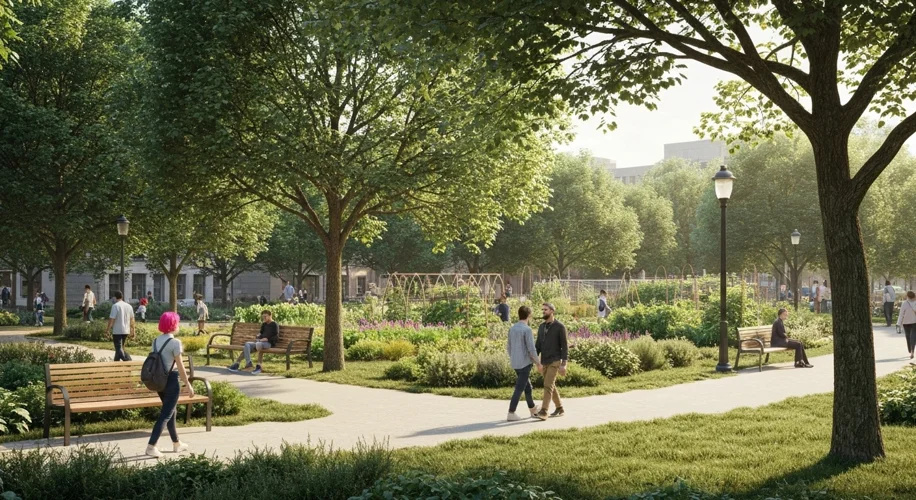Did you know that spending time in green spaces can significantly improve your mental well-being? New research is shining a light on just how crucial urban parks and natural areas are for our mental health, especially as more of us live in cities. It’s not just about pretty views; it’s about our actual brain chemistry and stress levels.
As someone who studies atmospheric science and the effects of our environment, I’m always looking for ways science can help us build healthier, more sustainable communities. This latest research connects environmental science with public health in a really practical way.
The science is clear: exposure to nature, even in small doses, can reduce feelings of stress, anxiety, and depression. Studies have shown that simply having access to green spaces in your neighborhood can lead to better mental health outcomes. Think about it – a walk in the park, a moment sitting under a tree, or even just seeing trees outside your window can have a calming effect. This is often linked to the sensory experience of nature: the sounds of birds, the smell of soil, the feel of a breeze.
What’s particularly exciting about this research is that it doesn’t just highlight the problem; it offers low-cost solutions for city planners and communities. We don’t always need massive, expensive park projects. Sometimes, the most impactful changes are simpler:
- Pocket Parks and Green Strips: Small, often overlooked areas can be transformed into mini-parks or green strips. These could be vacant lots, areas along sidewalks, or even just planting more trees in existing urban landscapes.
- Community Gardens: These spaces not only provide fresh food but also serve as hubs for social interaction and a connection to the earth. They’re proven stress relievers and community builders.
- Green Roofs and Walls: Incorporating plant life onto buildings can cool urban areas, manage stormwater, and provide small, accessible green spaces in dense neighborhoods.
- Improving Existing Parks: Sometimes, it’s about enhancing what we already have. Better maintenance, more diverse plantings, and adding simple features like benches or walking paths can make a big difference.
This research really resonates with me because it emphasizes that solutions for improving public health in cities don’t have to be prohibitively expensive. It’s about smart, community-focused planning that prioritizes nature. It’s about recognizing that the environment and our health are deeply intertwined, and that by investing in green spaces, we’re investing in our collective well-being.
As we continue to urbanize, it’s vital that we integrate nature into our city designs not as an afterthought, but as a core component of a healthy urban life. It’s a call to action for all of us to advocate for and create greener, healthier cities.

